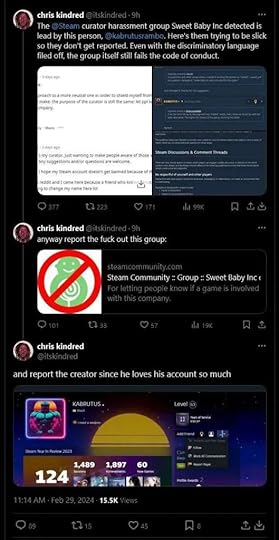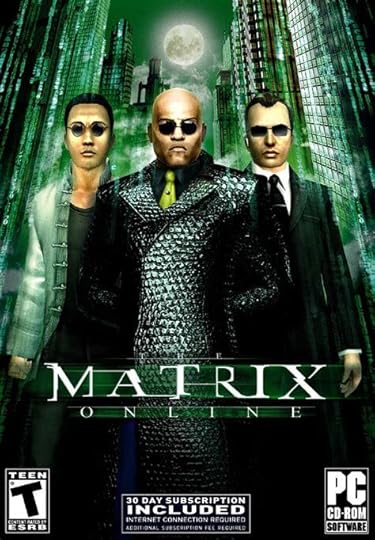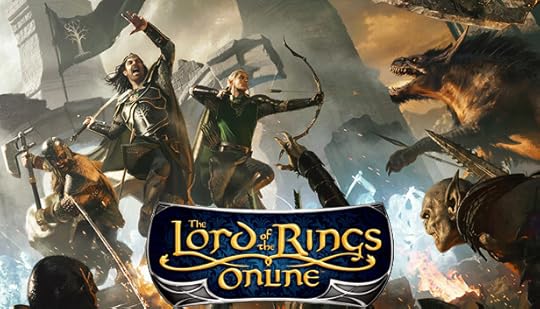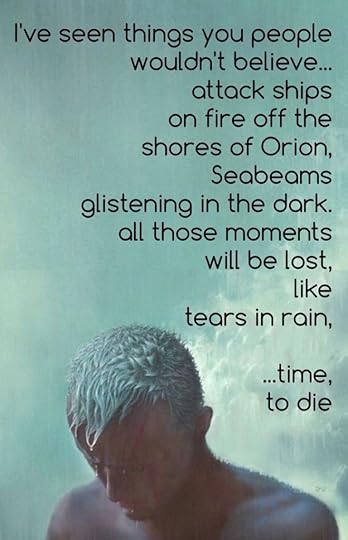Aaron Giddings's Blog
September 20, 2025
Ten Year Career Change Retrospective
I recently published this to LinkedIn (because where else do you put something like this for a semi-wide audience), but since Rule #4 is “Don’t waste your best stuff on the away games”. Here it is in its entirety. Just a few thoughts ten years removed on how my major career change has worked out.
Ten years ago this month (September), I turned in my last Microsoft contractor badge, snapped a final couple of selfies in the studio lobby, and walked away from the Redmond campus for the last time. A few days later, my trusty old Saturn and I would be eastbound on Interstate 90, heading for new opportunities and a career pivot in South Dakota.
I left behind a fourteen year career in game development, and thirty-five years of calling somewhere on the West Coast my home, in the hope that getting away from Washington and out of game development would allow me to find better job stability, improved career advancement, and a better quality of life for my family.
With a decade now spent in other industries, and with my oldest two children both graduated from high school, it’s worth a few minutes to ask, was it worth it? How did those goals match up against reality?
Cost of Living/Quality of Life – This has been an absolute win. Cost of living on west coast states continues to skyrocket. Meanwhile, the worst commute I’ve ever had here in South Dakota has been fifteen minutes. I’ve been able to attend my kids’ sports events, AWANA graduations, VBS productions, and everything else, because I haven’t been spending hours in my car commuting from the place we could afford to live to a developer job in Redmond, Seattle, or Kirkland. Here’s something that nobody talks about either: in Washington and California, a “family subscription” or offer, or pack, means two adults and two children. If you have more than two kids, you pay extra. In the midwest, a “family subscription” means two adults and as many children as are in the family. Job Security – This is the biggest miss of the bunch. Looking at my history while in game development, I changed jobs every two years or so. One notably longer stint at Monolith/WB Games helps drag that average up, but other than that, it’s a bunch of eighteen month or less contracts and a full time endevour, the vast majority of which I left not by choice, but because of a studio layoff, closure, or contract hard end date.Since leaving game dev, I’ve… changed jobs every two years on average, with one notable exception being my stint at MetaBank/Pathwards. Once again, all but one of those depatures were not by my own choice. Career Opportunities – Back on the plus side, this has been another win. I enjoyed my time in game dev doing QA, production, and audio roles, but my end goal was always to get onto the programming side of things. That opportunity never realized itself while in game dev, but when I finally got the chance after leaving, I jumped at it. Six years later, that’s a decision I don’t regret at all.
Two out of three isn’t bad, especially when the positives far outweigh the negatives. I don’t regret leaving game development. I definitely don’t regret leaving Washington. I don’t miss 80+ hour crunch weeks and eating three meals in the office every day. I do miss the camaraderie that came from those long crunch weeks, and being on a team all striving to get something built and released. These days I’ve had to seek out that kind of unity of purpose in volunteer organizations such as the Civil Air Patrol.
I suppose that if there are any takeaways from all of this, it’s that making a career pivot, whatever direction you go, is hard. Not everything is going to go how you think it will. But, if you’re doing it with a good plan, and for the right reasons, the positives will outweigh the negatives. (Picture at the top of this post is my youngest daughter and me, attending a playoff game for our local Independent league baseball team. A game that started at 6:30pm, which I never would have been able to take her to working the kinds of hours I did back in my “cool” game developer days.)
June 22, 2024
Chasing Smoke
It’s been a while since I’ve gotten a blog post up here. The truth is that although I enjoy posting, I don’t have time right now to split my free time focus between streaming, writing, YouTube, and blogging.
Add to that that my mostly neglected YouTube channel has suddenly picked up a lot of traffic in the past couple of months, and suffice that my focus has been elsewhere. I’ll post back here as I can, but right now, I’m trying to push the YouTube channel up to where it can get monetized.
Chasing monetization might be just trying to chase so much smoke, we’ll see. I’m going to give it a shot, at least.
March 27, 2024
Not So Sweet Cry Baby
All Chris Kindred had to do was not say anything. It was just that simple. Somebody, somewhere, didn’t like the work that she did, and that her company did on various game stories in the past few years. Big deal, it happens to everyone who works in games for more than a few months. Having haters comes with the territory of being an even remotely public figure in the age of the internet. Not punching down and responding to trolls living in their mother’s basement is something that most healthy, normal people figure out.
But Chris Kindred couldn’t do that. So on Leap Day, February 29th, 2024, she decided that some random Brazilian dude maintaining a curated Steam list of games that Chris Kindred’s company had been involved with, that random dude needed to be destroyed. He needed to have his curated Steam group crushed, and he needed to have his Steam account banned.

Now a bit of context for those who don’t marinate in the world of PC Gaming. Steam is to digital PC game sales what Amazon is to just about everything else. There are several other online storefronts (GOG.com and Epic Games being the other two largest), but Steam is by far the 900lb gorilla in the room. When Valve launched Steam, they were the first to have an online store. It’s the model that everyone else has followed.
For gamers who have been on Steam for a long time (and some of us have been on Steam for nineteen years at this point) our Steam accounts may hold thousands of games. Those games represent tens of thousands of dollars worth of games, cards, and in-game items, not to mention badges earned, screenshots created, etc. In short, for a long time PC gamer, losing one’s Steam account is a huge deal.
The other thing with Steam is that a huge number of games get released on there every week. There’s no way to keep track of them all, which is where curators and groups come in. Curators keep lists of games that match whatever their personal interests are. Like anime-inspired 2D sidescrolling Metroidvania clones? There’s a list for that. Alternative history roguelikes more your style? There’s probably a list for that too. As such, it should come as no surprise that at least one curator would notice that a specific narrative company had worked on a lot of story-heavy games which were critical darlings, but which were less impressively received by fans.
And so, with the stage set, we return now to our narrative…
The thing is, until Chris Kindred decided to punch way, way down, most people had never heard of Sweet Baby, Inc. Most actual gamers, regardless of their specific political stripes, don’t appreciate a bully, and the initial backlash on X and Steam was rapid. But when your job is grifting from development budgets in the name of Diversity, Inclusion, and Equity, you can always count on having friends in the media. And thus the tame, predictable little lapdogs at Kotaku, PC Gamer, (archive.org links there, because I’m not giving those assholes actual clicks) and others jumped to Sweet Baby Inc.’s defense by publishing stories about the “controversy” while conveniently leaving out the fact that the entire controversy was blown up by one thin skinned, whiny employee.
Now my personal opinion is that story consultant companies like Sweet Baby Inc. are about as useful to actual game development as sensitivity readers are to writers, shin splints are to runners, or diesel fuel is to gas powered cars. In short, useless if not actively harmful.
Looking over Wikipedia’s list of games that Sweet Baby Inc. has “contributed” to, I’ve only played one of them. Why The Crew: Motorfest needed “additional writing” I can’t imagine. In a racing game set in Hawaii where the story is a paint by numbers show up, drive cool cards, and do outlandish stunts, the contributions of a diversity consulting team seem like an utter waste of money. But hey, that’s basically their whole gig (and the same grift that sensitivity writers do) show up, impede actual developers trying to get shit done, make a few useless suggestions “You should race swap character X” or whatever, get paid, and leave. Move to the next company, wash, rinse, repeat. Keep the grift going because every major studio is run by terrified execs afraid of waking up to find their names at the top of an IGN story for being insufficiently diverse because they didn’t go along with the grift.
At this point, the “controversy” has been sort of picked up by a few legacy media outlets too, although they’re continuing to run with the totally disingenuous “Gamergate 2.0” narrative of “Those darn gamers just hate diversity!” as though this whole thing wasn’t kicked off by a cowardly, vindictive little bitch who can’t stand criticism.
Ironically, despite the fact that I’ve never had a single interaction with her, Chris Kindred has me blocked on X. Presumably that’s because she’s using a blocklist and I follow some “wrongthinking” people. Personally, I’d hope that this exposure ends the grift of Sweet Baby Inc., and that the money development studios are wasting on diversity consultants starts going to something more useful like, oh, I don’t know, hiring a few more full time employees or stocking better snacks, but that’s probably too much to ask.
 Granted, I can understand blocking me NOW, since I’ve referred to her in this post as a whiny, crybully, thin-skinned little bitch, but before this point, I’d never heard of her, much less interacted with her.
Granted, I can understand blocking me NOW, since I’ve referred to her in this post as a whiny, crybully, thin-skinned little bitch, but before this point, I’d never heard of her, much less interacted with her.
All I really know is that I’ve been out of the game for a while, I’m not planning to get back into the game anytime soon, and that there weren’t any diversity consultants contributing to the ‘90s classics that I’ve been posting to YouTube. (Yes, that’s a shameless plug, no, I’m not sorry.)
March 20, 2024
Gunfire at the Horizon
An interesting side effect of the various naval (and navel) posts I’ve been writing for the past few months was causing me to realize just how long ranged and accurate naval guns had gotten by World War II. I also don’t think that most sources (Wikipedia in particular) do this concept any favor by listing most ranges in meters and/or yards, rather than kilometers and miles. Because even though I know in my head that a thousand meters is the same as a kilometer, and that one thousand, seven hundred and sixty yards is the same as a mile, in my head, a mile and a kilometer just seem farther.
So, naval warfare. I think that most of us have this image of surface ship battles that comes from age of sail movies like Pirates of the Caribbean or Master and Commander, where ships closed to bad breath range before unloading broadsides into each other. While it’s true that there were still close range engagements in WWII (particularly by insanely gutsy American destroyers) the few major naval surface engagements started at extremely long ranges. No wonder then, that some of the surface battles describe combatants ducking in and out of storms. When you’re fighting at 15-20 mile ranges, there’s definitely opportunity to weather to play a part.
For a couple of quick examples, the Krupp 38cm SK C/34 guns that armed Bismark and Tirpitz had a range of 22.7 miles. The 16”/50 (406mm) Mark 7 guns of the Iowa-class battleships had a maximum range of 29 miles, and 23.64 miles accurate firing a 2,700lb super-heavy shell. The 46cm Type 94 naval guns of Japan’s Yamato-class could reach out to 26 miles, though with the inferiority of Japanese range-finding equipment, their effective range was less than other countries.
These ranges are really close (if not beyond) over the horizon distances on the open ocean. There’s a reason why before radar, ships had those high lookout positions, and it all comes down to math. Every foot higher your lookout is buys you a few additional feet or a quarter mile of visibility, and maybe the chance to see the enemy before they see you.
 Not going to do the math on how high the lookout station on Mushashi was, but that’s pretty tall. (Public domain source, Wikipedia)
Not going to do the math on how high the lookout station on Mushashi was, but that’s pretty tall. (Public domain source, Wikipedia)It’s also why spotting aircraft were a thing on battleships and cruisers in the 20s and 30s. Now there’s an aspect of interwar (and early WWII) naval air power that doesn’t get nearly the attention it deserves. These were crews launching off short catapults in awkward single-engine seaplanes or floatplanes to try and spot enemy ships over the horizon, then potentially direct gunfire onto the target, while simultaneously dodging AA fire, and praying that no carrier-based fighters decided to have them for lunch. Then, after all that, they’d have to finish their day by landing near their home ship, and waiting to be craned back aboard in open ocean, and plan to do it all again the next day!
 Curtiss SOC Seagull observation aircraft. (Public Domain, Wikipedia)
Curtiss SOC Seagull observation aircraft. (Public Domain, Wikipedia) Aichi E13A (Public Domain, Wikipedia)
Aichi E13A (Public Domain, Wikipedia)To close the circle a bit, even though naval guns are no longer the primary weapon of modern ships, the ranges are still significant, and the ability to put relatively inexpensive projectiles on target (at least as compared to a missile) remains a relevant capability. Just for an example, the US Navy’s current Arleigh Burke destroyers still carry a 5” (127mm) gun that can reach out and touch someone 23 miles away.
March 9, 2024
Rule 5 Warships – SN Sovetsky Soyuz
Azur Lane is currently in the midst of a major new event, “Snowrealm Peregrination” which sees all of the major factions joining together in Antarctica to investigate a major abnormality. The event also introduces some new Northern Parliament (USSR) shipgirls, the first META shipgirl available outside of a season or Meta Showdown, and finally makes playable a shipgirl that we’ve seen many times in previous events.
No, not IJN Yamato.
 Fanart from Danbooru of Soyuz being annoyed with how long she had to wait to become a playable character.
Fanart from Danbooru of Soyuz being annoyed with how long she had to wait to become a playable character.It’s time to meet SN Sovetsky Soyuz, the battleship commander of the Northern Parliament. A shipgirl with a rigging that never quite worked right, who hopes that something in Antarctica can help make her whole.
 Alternate costume from the side story, bringing a very literal interpretation of “gun bunny”.
Alternate costume from the side story, bringing a very literal interpretation of “gun bunny”.In reality, Sovetsky Soyuz was intended to be part of the Project 23 class of battleships begun by the USSR in the late 1930s. If completed, they would have been equivalent in size to Japan’s Yamato-class battleships, and America’s planned Montana-class. Armament and armor would have been weaker, however, because the USSR hadn’t figured out how to make armor or guns on par with their peers. Sending large swaths of your skilled engineers to the gulags will do that to your technological progress.
 Danbooru fanart of race queen Soyuz.
Danbooru fanart of race queen Soyuz.Typical of Stalin’s five year plans, reality got a vote. Five years is a long time to expect things to go on without any major unexpected events gumming things up, and the late 1930s was not a good time to start building battleships. Especially when you’re a mostly land-locked country a mortal enemy just a few poorly defended borders away.
 Danbooru fanart by MMK of Soyuz’s new staff.
Danbooru fanart by MMK of Soyuz’s new staff.At the time of the German invasion in June 1941, none of the Project 23 ships were complete. Of the fifteen originally planned, only four had even been started, with Sovetsky Soyuz being the most complete at roughly twenty percent. The hull would survive the war with little damage, but no construction progress, and was eventually scrapped in 1949.
 Official Manjuu art. From left to right, Soyuz, Tashkent, Sovetskaya Rossiya, Kirov, Tallinn, Minsk, and Gangut
Official Manjuu art. From left to right, Soyuz, Tashkent, Sovetskaya Rossiya, Kirov, Tallinn, Minsk, and GangutNow in Azur Lane, we’ve seen Sovetsky Soyuz quite a bit, but always in the shadows as the Northern Parliament’s leader. Her rigging deficiency (presumably because her wisdom cube was based on an incomplete vessel) has also been referenced repeatedly, although that also brings up a question of why the many other shipgirls based on incomplete or even completely speculative designs don’t suffer from the same flaw.
 Sovetsky Soyuz’s original rigging.
Sovetsky Soyuz’s original rigging.Regardless, the new event finally reveals her as a usable Ultra Rare character, and with a rigging redesign to match her new glow up.
 And now, the new, frozen hotness.
And now, the new, frozen hotness.Does this mean we’ll eventually see Sovetskaya Ukraina or Sovetskaya Gruziya in-game? Perhaps. Given that Rossiya and Belorussiya are already there, it’s certainly possible.
March 6, 2024
For Game Devs, Old Is New Again
I’m pretty behind the curve right now on content writing due to work and family commitments, and was seriously considering just posting a “brain empty, come back for Rule 5 on Saturday” post, but I couldn’t let this gem slide from today’s news.
It seems that Warner Bros. Discover Games head J.B Perrette sat down for a little interview with Gamespot and coughed up this gem about some of the publisher’s future development plans:
“Rather than just launching a one-and-done console game, how do we develop a game around, for example, a Hogwarts Legacy or Harry Potter, that is a live-service where people can live and work and build and play in that world in an ongoing basis?”

Hey, chase the current trend! Or, in this case, 2002 called, because “live world where people can live and work and build and play on an ongoing basis” sounds like a classic sandbox MMORPG. If only WB had seen fit to build one of those back in the day for one of their IPs… Oh, wait.
 RIP
RIP Not a sandbox, but still active!
Not a sandbox, but still active! Also still active!
Also still active!Of course, those are all games that WB either sold the rights to 3rd-party devs to build, or developed them in-house and then sold them off.
Maybe this time will be different. Maybe WBDG has more patience to see a game grow and succeed than past management did.
Maybe.
For the sake of my friends working on the Wonder Woman game, I hope so.
I guess it’s good to know that even though a lot has changed since I worked for WB Games, upper management is still laying down directives chasing last year’s trends. Because I have no doubt that the core designers, artists and programmers on a lot of these dev teams have some great ideas about the games they’d like to make, some of which might actually involve original IPs (gasp), but corporate hath laid down The Law, and the law says to chase the current money-making game trend, even though by the time something is actually out the door, the current hotness will be something else entirely.
February 28, 2024
Edgelord Gets You Nowhere
So there I was… listening to a bunch of semi-professional historians with anime avatars (and one large pig) riff on Tucker Carlson’s painful interview with Vladimir Putin and the aftermath of same. The conversation moved to the reflexive right-wing edgelord tendency to take a contrarian position for no other reason that because the leftists are for/against it.
Unfortunately, this really isn’t any different than the current leftist fixation on Orange Man Bad and automatically taking the opposite side because, well, if the Orange Man said it, then it must be wrong.
Basically, no one’s gotten any smarter politically than ninety-three years ago, when Horse Feathers premiered in theaters and the Marx Brothers (the funny ones, not the commie bastard) gave us this gem.
The more things change…
Actually, things really haven’t changed much at all, considering that the Apostle Paul took the time to warn both Titus and Timothy against making foolish and time wasting arguments.
“But avoid foolish disputes, genealogies, contentions, and strivings about the law; for they are unprofitable and useless.” – Titus 3:9 (NKJV)
“But avoid foolish and ignorant disputes, knowing that they generate strife.” – II Timothy 2:23 (NKJV)
Look, I’m certainly not one to suggest not taking an opposing position when it’s the right one. As one of my other favorite quotes goes: “Truth never depends on someone’s willingness to believe it.” – John Walker, WSJ Letters to the Editor 9/23/18.
Likewise, I understand the urge to take that reflexive, contrarian position. Lord knows I certainly did my share of that kind of thing various long-dead Usenet boards and PHP forums. I’d like to thing that current me has learned a few things along the way though, and one of them is that unless you’re a Larry Correia-type who can make a public sport of hunting idiots, hopefully in a way that is sufficiently humiliating as present them as a negative example to others with similar inclinations, it’s best to not waste the time and energy which could be put into more constructive pursuits.
February 24, 2024
Rule 5 Warships – KMS Ägir
Back from a semi-accidental couple weeks off, and picking up the Rule 5 posts more or less right where I left off. We first caught a glimpse of Ägir (or Aegir, depending on how you’re searching), in the Yat Sen post. Like most Iron Blood shipgirls, her rigging tends to have a feisty mind of its own sometimes.
 Ägir’s official costume and art from Azur Lane.
Ägir’s official costume and art from Azur Lane.Ägir’s design is based on the proposed O-class battlecruisers found in the 1939 Plan Z for the Kriegsmarine. The idea behind the O-class was fill the gap between the Kriegsmarine’s planned aircraft carriers and battleships, and the lighter escort cruisers. In theory, the O-Class could function semi-autonomously as commerce raiders or detach from a main fleet group to engage fleeing merchant ships or lighter surface combatants.
 Ägir cosplay from Irrwen
Ägir cosplay from IrrwenThe O-class’s primary armament would have consisted of six 380mm guns in three dual turrets, backed up by six 150mm guns (presumably also in three pairs of dual turrets), plus a hefty AA compliment of eight 105mm dual purpose guns, eight 37mm guns, and twenty 20mm cannons. Six torpedo tubes were also slated to be carried, because nothing says “Hope your crew is good swimmers” like closing to torpedo range and firing off a full salvo after pounding a target with gunfire starting twenty-two miles out.
 More from Irrwen
More from IrrwenSide note that is definitely fodder for a non-Rule Five blog, but twenty-two mile main gun range? Something I’ve realized in researching some of these posts is just how far these main guns could reach by the end of their development life. I think that a lot of us have this image of ship-to-ship naval combat that’s heavily influenced by Hollywood depictions of Age of Sail gun battles and WW II movies, and don’t realize that the last few large ship gun battles started while just about over the horizon.

Anyway, back to Azur Lane and Ägir. Her name is taken from the Norse god of the sea, and as such, she shows up in-game with horns. She tends to be a supporting character for the Iron Blood faction, but also shows up in quite a lot of the official art.
 Formidible, Ägir, and Sovetskaya Belorussiya (Official Manjuu art)
Formidible, Ägir, and Sovetskaya Belorussiya (Official Manjuu art)
February 21, 2024
Lukewarm Is No Defense
I’m going to do some halfway current event news, because something from last Sunday (other than the Super Bowl) caught my interest.
Quickly buried in the news cycle was the story of an attempted mass shooting at Pastor Joel Osteen’s Lakewood Church in Houston. The asshole, whose name I will not dignify by writing, showed up between services with an AR-15, a backup .22 pistol in a backpack, and intent to do malice.
Fortunately, Lakewood Church employs private security, usually off-duty police officers. Two of said off-duty officers engaged the asshole and arranged an immediate, face-to-face meeting with God for her to discuss the error of her ways. Tragically, two innocent victims were wounded in the exchange, a 57-year-old man who was at the church, and a seven-year-old boy, the son of the asshole, whom she had brought with her.
Solid summary found here: https://www.bizpacreview.com/2024/02/12/lakewood-church-shooter-alleged-to-be-transgender-had-palestine-written-on-rifle-1436414/
I’ll let smart tactical people diagnose the shoot specifics, but although CNN and Houston PD may be baffled as to the motives behind this attempted violence, there seem to be a few clues left to suggest a motive.
1. The asshole had “Palestine” or possibly “Free Palestine” written on her rifle.
2. The asshole had a history of antisemitic writings online.
3. The asshole brought her biological son with her to use as a human shield.
4. The asshole was also transgender, and had been identifying on and off as a man for years.
5. Oh, and the asshole had a long criminal record, and was in the country illegally, meaning that she was in illegal position of her weapons in the first place.
Yeah, I wonder what possible motive she might have had for trying to shoot up a church, specifically a well-known mega church with a pastor whose smiling face beams from TV screens across the country every week.
Here’s the thing though: Lakewood Church is just about as mushy and “seeker friendly” as a church can possibly be. Osteen basically preaches a Prosperity Gospel: Jesus is love, Jesus will make you happy and healthy and wealthy, and don’t spend too much time worrying about those pesky Bible passages talking about sin, persecution, trials, and repentance. Much like the He Gets Us ads from the Super Bowl, they’re bland in calculated way to be as inoffensive as possible while still technically conveying some amount of Gospel message.
And on Sunday, February 11, 2024, that blandness mattered not one whit to one asshole with a rifle and a demented, demonic point to make.
What this ought to be, is one more major wakeup call for Christians everywhere. There’s no more time to be on the fence. It’s time to pick a side, and either you’re a Christian first and everything else second, or you’re not. Doesn’t matter if you’re preaching “Jesus is Love” and singing Kumbaya, or doing a Jonathan Edwards impression with “Sinners in the Hands of an Angry God.” Sooner or later, persecution is coming.
“I know your works, that you are neither cold nor hot. I could wish you were cold or hot. So then, because you are lukewarm, and neither cold nor hot, I will vomit you out of My mouth. Because you say, ‘I am rich, have become wealthy, and have need of nothing’—and do not know that you are wretched, miserable, poor, blind, and naked— I counsel you to buy from Me gold refined in the fire, that you may be rich; and white garments, that you may be clothed, that the shame of your nakedness may not be revealed; and anoint your eyes with eye salve, that you may see.” Revelation 3:15-18 (NKJV)
Lest I be accused of writing bad Tim LaHaye fanfic, I would like to close by offering the statement that I don’t have a clue what form the next round of persecution is going to take, merely that it is only going to get worse. Maybe it takes the form of continuing to arrest peaceful protesters, like has been done with Pro-Life protesters in Tennessee. It might be a “friendly” chat with a law enforcement officer over posting something espousing a traditional, Biblical understanding of gender and sex, as has happened in the UK for “grossly offensive” tweets. Maybe it will just be the American Senate deciding that “No, churches shouldn’t be able to employ armed security. Make them be targets.” Most likely it’s something else entirely, but make no mistake, more difficult times are clearly coming.
February 7, 2024
Goodbye to The Crew – A Backlog Burndown of Sorts
What is it when a video game dies? I’ve long abandoned the Backlog Burndown concept, since I can’t finish games even as quickly as Epic puts them up for freebies in the store. But, when I heard that The Crew would be shutting down its servers after a ten-year run, and that there looks to be no offline patch in the works, I wanted to make sure I at least knocked that particular game off my backlog while I still had the chance.
Obviously I have a bit of a history with this franchise. The Crew 2 was probably the biggest review I’ve ever written for Marooners’ Rock. It gave me the opportunity to write a whole different feature about the Harley Davidson Iron 883 (which was approved by Ubisoft’s PR, but not by Harley’s ahead of time). Then last year, when The Crew: Motorfest came out, I got to do it again, though without the bike review.
But somehow, despite all that, I’d only barely ever scratched the surface of the game that started it all. What’s really the most interesting about The Crew is that in some ways, its origin has a lot of similarities to the Saints Row series. The first game is a bog-standard clone of another series, but the sequels go increasingly crazy and off the rails in their own directions. In Saints Row’s case, it started as a Grand Theft Auto clone and went increasingly over the top. For The Crew, the first game is essentially a Need for Speed clone, complete with the plot about an outlaw racer looking for payback on the man who murdered his brother and framed him for the murder.
None of that really matters though. You can’t buy The Crew on any digital service anymore. You could buy a used physical copy for Xbox 360 or PS3 off eBay, but if you do, you’d better be sure and play it quickly, because that disc will be a coaster after March 31st.
What does matter? I finished the game, and got it off the backlog, so there’s that. The story was okay.
Here’s the thing. In the long run, every game dies eventually. Or every gamer. None of us are immortal, and in the end, the server goes down, the power gets pulled, the hard drive gets corrupted, none of the Steam Achievements, PlayStation Trophies, Xbox Gamerscore, or arcade high scores matter.
Meaningless, meaningless, everything is meaningless, says the scribe in Ecclesiastes. No real difference there from books, movies, or TV shows that can take hours and hours of time, Save that those three forms of entertainment don’t (usually) become unavailable after reading through them, or magically disappear off your shelf before you’ve ever had the chance to read them.




